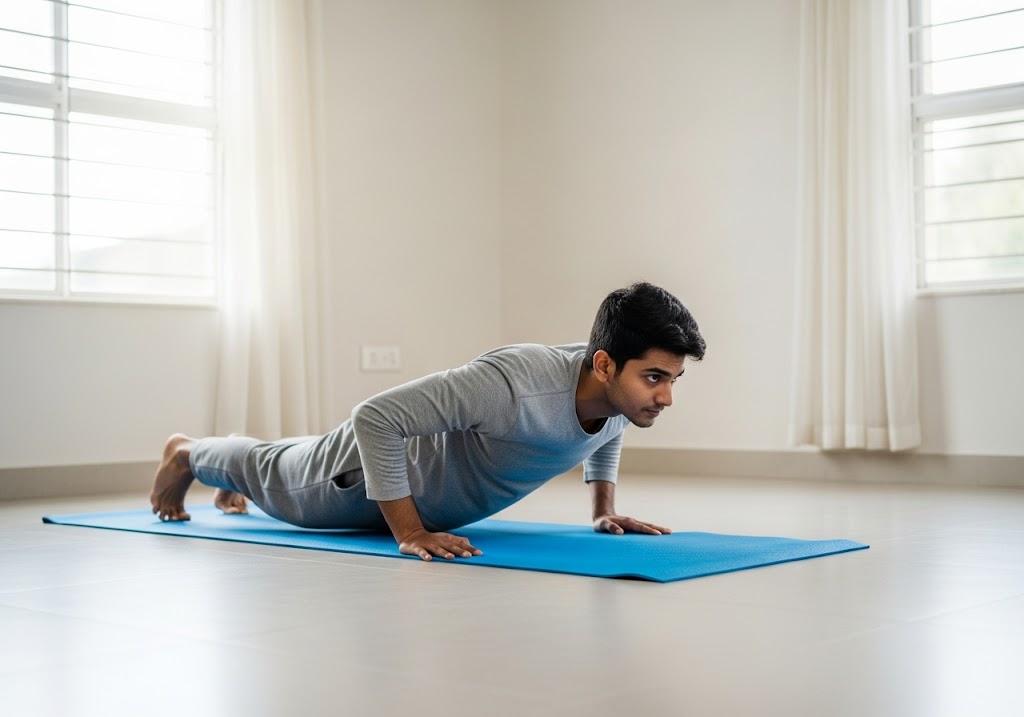Cycling for 30 minutes burns how many calories? Cycling for 30 minutes burns 200-600 calories depending on your body weight and intensity level, with a 70kg person burning approximately 280-350 calories at moderate intensity.
Want to know exactly how many calories cycling for 30 minutes burns and maximize your weight loss results? The answer depends on multiple factors including your body weight, cycling intensity, terrain, and bike type. On average, cycling for 30 minutes burns between 200-600 calories, making it an excellent exercise for weight loss and cardiovascular health.
Understanding calories burned cycling helps you plan effective workouts and achieve your fitness goals faster. Whether you’re using a cycling calorie calculator or estimating manually, knowing the factors that influence calorie burn helps optimize your training sessions for maximum fat loss and improved fitness levels.
Table of Contents
30 Minutes Cycling Calories Burned: Detailed Breakdown
Understanding exactly how cycling for 30 minutes burns calories across different body weights and intensities helps plan effective workout sessions. This detailed breakdown provides specific calorie estimates for various scenarios and cycling conditions.
| Body Weight | Light Intensity | Moderate Intensity | Vigorous Intensity | Racing Intensity |
| 50kg | 150-180 calories | 200-250 calories | 280-340 calories | 350-420 calories |
| 60kg | 180-220 calories | 240-300 calories | 340-410 calories | 420-500 calories |
| 70kg | 210-250 calories | 280-350 calories | 390-470 calories | 490-580 calories |
| 80kg | 240-290 calories | 320-400 calories | 450-540 calories | 560-670 calories |
| 90kg | 270-320 calories | 360-450 calories | 500-600 calories | 630-750 calories |
Intensity Definitions
Light intensity cycling involves comfortable conversation pace at 50-60% maximum heart rate, suitable for recovery rides and gentle exercise. Moderate intensity represents brisk cycling at 60-70% maximum heart rate where conversation becomes slightly difficult but sustainable.
Vigorous intensity cycling occurs at 70-85% maximum heart rate with limited conversation ability and noticeable breathing increases. Racing intensity exceeds 85% maximum heart rate with very difficult or impossible conversation and maximum sustainable effort levels.
Learn the progression and technique for the how to do a one‑arm push‑up and unlock elite strength with bodyweight training.
Maximizing Calorie Burn
To maximize calories burned cycling in 30 minutes, incorporate interval training with alternating high and moderate intensities. This approach can increase total calorie burn by 20-30% compared to steady-state cycling while improving cardiovascular fitness and metabolic efficiency.
For additional calorie-burning exercises, how many calories does a plank burn provides information about complementary core exercises that enhance overall fitness.

How Many Calories Do You Burn Cycling?
The number of calories burned cycling varies significantly based on individual factors and cycling conditions. A 70kg person cycling at moderate intensity for 30 minutes typically burns around 300-400 calories, while the same person cycling vigorously can burn 450-600 calories in the same timeframe.
Body weight plays the most significant role in determining calories burned cycling, with heavier individuals burning more calories than lighter ones at the same intensity. Cycling intensity, measured by speed and effort level, directly impacts calorie expenditure, with higher intensities producing exponentially greater calorie burns for effective weight management.
This structured basic calisthenics workout is ideal for beginners looking to gain strength, control, and confidence.
How Cycling Uses Calories
Cycling burns calories through aerobic metabolism, where your body converts stored carbohydrates and fats into energy for muscle contractions. This process requires oxygen and increases your heart rate, breathing rate, and metabolic rate significantly above resting levels for sustained energy production.
The body’s calorie-burning process during cycling involves multiple energy systems working together to meet the increased demand. Initially, your body uses readily available glucose from muscles and blood, then transitions to burning stored fat for sustained energy during longer cycling sessions, making it excellent for fat loss goals.
For comprehensive fitness routines that complement cycling, exploring calisthenics exercises provides excellent cross-training options for complete body development.
Cycling Calorie Calculator: Factors That Affect Burn Rate
Understanding the factors that influence how many calories cycling for 30 minutes burns helps you maximize your workout effectiveness. These variables work together to determine your total calorie expenditure during any cycling session.
| Factor | Impact Level | Example | Calorie Range (30 min) |
| Body Weight | High | 60kg vs 90kg person | 200-500 calories |
| Cycling Intensity | Very High | Leisurely vs Racing | 150-600 calories |
| Terrain | Moderate | Flat vs Hills | +20-40% increase |
| Bike Type | Low | Road vs Mountain | ±10-15% difference |
| Weather Conditions | Low | Headwind vs Tailwind | ±5-10% difference |
| Fitness Level | Moderate | Beginner vs Advanced | ±15-20% efficiency |
Body Weight Impact
Your body weight significantly determines calories burned cycling, with heavier individuals requiring more energy to move their mass. A 60kg person burns approximately 240 calories cycling moderately for 30 minutes, while a 90kg person burns around 360 calories under identical conditions.
Intensity Levels
Cycling intensity has the greatest impact on calorie burn rates, with vigorous cycling burning nearly double the calories of leisurely pace. Understanding intensity zones helps optimize your cycling sessions for specific calorie-burning and fitness goals.
Terrain Considerations
Hills and inclines dramatically increase calorie burn during cycling by requiring additional muscular effort to overcome gravity. Cycling uphill can increase calorie expenditure by 30-50% compared to flat terrain cycling at the same speed.
For effective warm-up routines before cycling, warm up exercises for beginners provides essential preparation techniques for safe and effective training.
1 Hour Cycling Calories: Extended Session Benefits
Extended cycling sessions of one hour provide substantial calorie burns and numerous health benefits beyond shorter rides. Understanding 1 hour cycling calories helps plan longer training sessions for maximum weight loss and endurance improvements.
A 70kg person cycling at moderate intensity for one hour typically burns 600-800 calories, while vigorous cycling can burn 900-1200 calories in the same timeframe. These extended sessions provide excellent cardiovascular benefits, improved fat oxidation, and enhanced mental well-being through sustained aerobic exercise.
Longer cycling sessions allow your body to tap into fat stores more effectively after depleting initial carbohydrate reserves. This metabolic shift, occurring after 20-30 minutes of sustained exercise, makes hour-long rides particularly effective for fat loss and body composition improvements when combined with proper nutrition strategies.
View the perfect calisthenics diet chart to support your workouts and recovery

10 KM Cycling Calories: Distance-Based Calculations
Understanding 10 km cycling calories helps plan distance-specific goals and track progress effectively. The time required to cover 10km varies based on speed and terrain, affecting total calorie burn calculations.
| Speed | Time for 10km | Calories (70kg person) | Intensity Level |
| 15 km/h | 40 minutes | 320-400 calories | Leisurely |
| 20 km/h | 30 minutes | 300-380 calories | Moderate |
| 25 km/h | 24 minutes | 290-360 calories | Vigorous |
| 30 km/h | 20 minutes | 280-350 calories | Racing |
Speed vs Calorie Relationship
Faster cycling speeds require more power output but shorter durations, creating complex relationships between speed, time, and total calorie burn. Understanding these relationships helps optimize training for specific goals.
Distance Planning
Planning cycling routes based on distance helps ensure consistent calorie burns and training adaptations. Regular 10km rides provide excellent baseline fitness while longer distances challenge endurance and increase calorie expenditure significantly.
For complementary high-intensity training, jumping jacks exercise benefits offers excellent cardio alternatives that complement cycling workouts.
10 Minutes Cycling Calories Burned: Quick Session Analysis
Short 10-minute cycling sessions provide convenient fitness options for busy schedules while still delivering meaningful calorie burns. Understanding 10 mins cycling calories burned helps incorporate brief exercise bouts into daily routines effectively.
A 70kg person cycling moderately for 10 minutes burns approximately 80-120 calories, making these short sessions valuable for metabolic health and weight management. While brief, these sessions contribute to daily calorie expenditure and can be repeated multiple times throughout the day for cumulative benefits.
High-intensity 10-minute cycling intervals can burn 120-180 calories while providing excellent cardiovascular conditioning and metabolic benefits. These brief but intense sessions are particularly effective for improving fitness when time is limited, making them ideal for busy lifestyles requiring efficient exercise solutions.
Discover how many calories 15 minutes of running burns and turn your quick run into real results.
Slow and Steady vs. Fast and Intense Cycling
The choice between slow steady cycling and fast intense sessions significantly impacts calories burned cycling and training adaptations. Each approach offers unique benefits for different fitness goals and individual preferences.
Slow, steady cycling at 60-70% maximum heart rate promotes fat oxidation and aerobic base building while being sustainable for longer durations. This approach typically burns 200-350 calories in 30 minutes while improving cardiovascular efficiency and building endurance capacity for longer rides.
Fast, intense cycling at 80-90% maximum heart rate burns 350-600 calories in 30 minutes while improving anaerobic power and metabolic rate. High-intensity sessions create greater post-exercise calorie burn through increased oxygen consumption and metabolic elevation lasting hours after exercise completion.
| Approach | Intensity | 30-Min Calories | Primary Benefits | Best For |
| Slow & Steady | 60-70% HR Max | 200-350 | Fat burning, endurance | Weight loss, base building |
| Fast & Intense | 80-90% HR Max | 350-600 | Power, metabolism | Time efficiency, fitness |
| Interval Mix | Variable | 300-500 | Combined benefits | Balanced development |
For understanding optimal exercise timing, is it better to do cardio before or after weights provides valuable insights for combining cycling with strength training.

Stationary Cycling: Indoor Calorie Burning
Stationary cycling offers controlled environments for consistent calorie burning regardless of weather conditions. Understanding how cycling for 30 minutes burns calories on stationary bikes helps plan effective indoor workouts year-round.
Stationary bike workouts typically burn slightly fewer calories than outdoor cycling due to reduced wind resistance and terrain variations. However, the ability to maintain consistent intensity and incorporate structured interval training often compensates for this difference through improved workout quality and adherence.
Benefits of Indoor Cycling
Indoor cycling provides precise control over resistance levels, allowing for structured interval training and progressive overload. Climate control eliminates weather-related barriers while entertainment options make longer sessions more enjoyable and sustainable for regular exercise habits.
Calorie Burn Comparison
A 70kg person cycling on a stationary bike at moderate intensity for 30 minutes burns approximately 250-350 calories, compared to 300-400 calories for outdoor cycling at similar effort levels. The difference reflects reduced environmental challenges but improved consistency and safety benefits.
Workout Variations
Stationary bikes enable diverse workout formats including steady-state cardio, interval training, and virtual reality experiences. These variations help prevent boredom while targeting different energy systems and maintaining long-term exercise adherence for sustainable fitness improvements.
Explore a detailed comparison in calisthenics vs gym and decide which suits your fitness goals best.

Outside Cycling: Outdoor Calorie Advantages
Outdoor cycling typically burns more calories than indoor alternatives due to environmental factors and varied terrain challenges. Understanding how many calories cycling for 30 minutes burns outdoors helps maximize natural training opportunities.
Wind resistance, terrain variations, and balance requirements increase energy expenditure during outdoor cycling sessions. These factors can increase calorie burn by 15-25% compared to indoor cycling at perceived similar intensities, making outdoor rides more effective for weight loss goals when weather permits.
Natural terrain provides automatic interval training through hills, headwinds, and surface changes that challenge different muscle groups and energy systems. This variety not only increases calorie burn but also improves overall fitness, balance, and bike handling skills essential for cycling proficiency and enjoyment.
| Outdoor Factor | Calorie Impact | Benefit |
| Wind Resistance | +10-20% | Increased power output |
| Hill Climbing | +30-50% | Strength building |
| Terrain Variety | +15-25% | Muscle diversity |
| Balance Demands | +5-10% | Core engagement |
For recovery strategies after intense outdoor cycling, what is foam rolling provides excellent techniques for muscle recovery and injury prevention.
Benefits of Cycling Beyond Calorie Burn
While understanding how many calories cycling for 30 minutes burns is important for weight management, cycling provides numerous additional health benefits that enhance overall quality of life and long-term wellness.
Cardiovascular improvements from regular cycling include reduced resting heart rate, improved blood pressure, and enhanced circulation throughout the body. These adaptations reduce risk of heart disease, stroke, and metabolic disorders while improving energy levels and daily functioning capacity.
Mental health benefits include stress reduction, improved mood, and enhanced cognitive function through increased blood flow to the brain. Outdoor cycling provides additional benefits through nature exposure, vitamin D synthesis, and mental stimulation from changing environments and scenic routes.
| Benefit Category | Specific Benefits | Timeline |
| Cardiovascular | Lower BP, improved circulation | 2-4 weeks |
| Muscular | Leg strength, core stability | 4-6 weeks |
| Mental Health | Reduced stress, better mood | Immediate |
| Weight Management | Fat loss, muscle preservation | 4-8 weeks |
| Bone Health | Improved density, joint health | 3-6 months |
Joint-Friendly Exercise
Cycling provides low-impact exercise that strengthens muscles while minimizing joint stress, making it suitable for people with arthritis, joint injuries, or weight concerns. This accessibility makes cycling an excellent long-term exercise option for maintaining fitness throughout life.
Social Opportunities
Group cycling activities provide social interaction and motivation while burning calories and improving fitness. These social aspects improve exercise adherence and mental well-being while creating supportive communities around healthy lifestyle choices.
For comprehensive fitness routines, full body calisthenics workout offers excellent strength training options that complement cycling’s cardiovascular benefits.
Can You Lose Weight with Cycling?
Yes, cycling is highly effective for weight loss when combined with appropriate nutrition strategies. Understanding how cycling for 30 minutes burns calories helps create sustainable calorie deficits necessary for fat loss while preserving muscle mass and metabolic rate.
Successful weight loss through cycling requires consistency and progressive overload to continue challenging your body as fitness improves. Regular cycling sessions of 30-60 minutes, combined with 2-3 strength training sessions weekly, provide optimal body composition changes while maintaining metabolic health and functional strength.
The key to weight loss success lies in creating sustainable habits rather than extreme measures. Cycling provides enjoyable exercise that can be maintained long-term, making it superior to unsustainable crash diets or excessive exercise programs that often lead to rebound weight gain and metabolic damage.
Calorie Deficit Creation
Weight loss requires burning more calories than consumed, typically achieved through combining cycling exercise with mindful nutrition choices. A 30-minute cycling session burning 300-400 calories significantly contributes to daily calorie deficits when repeated consistently throughout the week.
Metabolic Benefits
Regular cycling improves insulin sensitivity, increases muscle mass, and elevates metabolic rate both during and after exercise. These adaptations make weight loss easier and help maintain results long-term through improved metabolic efficiency and body composition changes.
For nutrition strategies that support cycling and weight loss, intermittent fasting plan provides structured approaches to meal timing and calorie management.

How Much Cycling to Burn 500 Calories
Burning 500 calories through cycling requires different durations based on body weight, intensity, and cycling conditions. Understanding these relationships helps plan effective fat-loss workouts and achieve specific calorie-burning goals.
A 70kg person needs approximately 45-60 minutes of moderate cycling to burn 500 calories, while vigorous cycling can achieve this goal in 35-45 minutes. Heavier individuals burn 500 calories faster, while lighter people require longer durations or higher intensities to reach this target.
| Body Weight | Moderate Intensity | Vigorous Intensity | High Intensity |
| 60kg | 55-65 minutes | 40-50 minutes | 30-35 minutes |
| 70kg | 50-60 minutes | 35-45 minutes | 25-30 minutes |
| 80kg | 45-55 minutes | 30-40 minutes | 22-28 minutes |
| 90kg | 40-50 minutes | 28-35 minutes | 20-25 minutes |
Interval Training for Efficiency
High-intensity interval training (HIIT) cycling can burn 500 calories in 25-35 minutes through alternating periods of maximum effort and recovery. This approach provides time-efficient calorie burning while improving cardiovascular fitness and metabolic rate significantly.
Practical Applications
Planning cycling sessions around 500-calorie targets helps create consistent calorie deficits for weight loss while providing measurable goals for motivation and progress tracking. Combining cycling with other activities can help reach daily calorie burn targets more efficiently.
For complementary exercises that burn calories efficiently, how many burpees to burn 1000 calories provides high-intensity alternatives for comprehensive fitness training.
20 KM Cycling Calories Burn: Long Distance Benefits
Cycling 20km provides substantial calorie burns and endurance benefits while being achievable for most fitness levels. Understanding 20 km cycling calories burn helps plan longer training sessions for advanced fitness and weight loss goals.
A 70kg person cycling 20km at moderate pace (20 km/h) burns approximately 600-750 calories in 60 minutes, making it an excellent workout for significant calorie expenditure. Faster speeds reduce time but maintain similar calorie burns through increased intensity demands.
Long-distance cycling sessions like 20km rides provide excellent endurance training while promoting fat oxidation through sustained aerobic exercise. These sessions improve cardiovascular efficiency, mental toughness, and cycling-specific fitness adaptations that enhance overall health and performance capabilities.
Training Progression
Building toward 20km cycling sessions requires gradual progression from shorter distances to prevent overuse injuries and ensure sustainable improvement. Start with comfortable distances and increase by 10-15% weekly until reaching 20km targets consistently.
Route Planning
Planning 20km cycling routes with varied terrain and scenery maintains interest while providing different training stimuli. Hills increase calorie burn and strength development, while flat sections allow recovery and technique refinement for balanced fitness development.
For recovery considerations during intense training, should you exercise with sore muscles provides guidance on training through fatigue while avoiding injury.

Recovery and Post-Cycling Nutrition
Proper recovery after cycling sessions maximizes training adaptations while preparing your body for subsequent workouts. Understanding post-exercise nutrition and recovery strategies enhances the benefits of knowing how cycling for 30 minutes burns calories.
Post-cycling nutrition should focus on replenishing glycogen stores and providing protein for muscle recovery within 30-60 minutes after exercise. This timing window optimizes muscle protein synthesis and glycogen replenishment while minimizing muscle breakdown from intense cycling sessions.
Hydration plays a crucial role in recovery, with cyclists needing to replace fluid losses from sweating during exercise. Adequate hydration supports nutrient transport, temperature regulation, and metabolic processes essential for adaptation and recovery from cycling training.
Recovery Strategies
Active recovery through gentle movement, stretching, or light cycling promotes blood flow and reduces muscle stiffness while maintaining fitness gains. This approach prevents excessive fatigue accumulation while preparing for subsequent training sessions.
Sleep Importance
Quality sleep provides the primary recovery period where muscle repair, hormone regulation, and memory consolidation occur. Adequate sleep enhances the benefits of cycling exercise while preventing overtraining and maintaining immune function for consistent training.
For recovery techniques, cold shower vs hot shower explores different temperature therapies that can enhance post-cycling recovery and adaptation.
Comparing Cycling with Other Exercises
Understanding how cycling for 30 minutes burns calories compared to other exercises helps choose optimal activities for specific fitness goals. This comparison provides context for cycling’s effectiveness within comprehensive fitness programs.
Cycling typically burns more calories than walking but fewer than running at equivalent intensities. However, cycling’s low-impact nature allows for longer durations and higher frequencies, potentially resulting in greater total calorie expenditure over time through improved exercise adherence and reduced injury risk.
| Exercise (30 min, 70kg person) | Calorie Range | Impact Level | Accessibility |
| Cycling (Moderate) | 280-350 | Low | High |
| Running (Moderate) | 350-450 | High | High |
| Swimming | 300-400 | Low | Moderate |
| Walking (Brisk) | 150-200 | Very Low | Very High |
| Weight Training | 200-300 | Low | Moderate |
Exercise Selection Factors
Choosing optimal exercises depends on individual preferences, physical limitations, available time, and specific fitness goals. Cycling excels for those seeking low-impact, high-calorie exercise that can be performed outdoors or indoors regardless of weather conditions.
Combination Benefits
Combining cycling with strength training and flexibility work provides comprehensive fitness development while preventing overuse injuries and maintaining motivation through variety. This approach optimizes health benefits while accommodating different preferences and goals.
For comparative calorie burns, 100 squats burn how many calories provides insight into strength training calorie expenditure that complements cycling workouts.
Technology and Cycling Calorie Tracking
Modern technology provides accurate methods for tracking how many calories cycling for 30 minutes burns through heart rate monitors, power meters, and smartphone applications. These tools enhance training precision while providing motivation through detailed feedback and progress tracking.
Heart rate monitors provide real-time intensity feedback that helps optimize calorie burn during cycling sessions. By maintaining target heart rate zones, cyclists can ensure appropriate training intensities for specific goals while accurately estimating calorie expenditure based on individual physiological responses.
GPS cycling computers track distance, speed, elevation, and power output to provide comprehensive training data including precise calorie calculations. This detailed information helps plan effective workouts while monitoring progress toward fitness and weight loss goals through objective measurements.
Discover how many crunches per day and how to use them effectively to build core strength without overdoing it.
Smartphone Applications
Cycling apps provide convenient tracking options with social features, route planning, and detailed analytics. Many apps include cycling calorie calculator functions that consider personal data and ride characteristics for accurate calorie estimates and training insights.
Wearable Devices
Fitness trackers and smartwatches offer continuous monitoring of heart rate, activity levels, and estimated calorie burn throughout daily activities including cycling sessions. This comprehensive tracking provides insights into overall energy expenditure and activity patterns for better health management.
For beginners seeking structured exercise programs, bodyweight exercises for beginners offers excellent starting points for building fitness that complements cycling activities.
Conclusion
Understanding exactly how cycling for 30 minutes burns calories empowers you to make informed decisions about your fitness routine and weight loss goals. Whether you burn 200 calories during leisurely rides or 600 calories through high-intensity sessions, cycling provides an excellent, sustainable exercise option for long-term health and fitness. The key to success lies in consistency, progressive challenge, and combining cycling with proper nutrition for optimal results that enhance both physical and mental well-being.
Want to master the calisthenics handstand and take your skills to the next level? Whether you’re a beginner or pushing advanced skills, ISC – Indian School of Calisthenics offers expert guidance to help you master bodyweight training. Visit us at SRPF Ground, NH8, Goregaon (E), Mumbai – 400065. For class schedules, personalized coaching, or more details, call +91 77159 53218. Train smart, move better, and unlock your back strength with ISC.
Cycling for 30 Minutes Burns How Many Calories? – FAQs
Can I lose weight by cycling 30 minutes a day?
Yes, cycling 30 minutes daily burns 200-600 calories depending on intensity and body weight, creating calorie deficits essential for weight loss.
How many calories are burned in a 30-minute cycle?
A 30-minute cycling session burns 200-600 calories depending on body weight, intensity level, and cycling conditions like terrain and weather.
How to burn 500 calories in 30 minutes?
Burn 500 calories in 30 minutes through high-intensity cycling, weighing 80kg+ or combining cycling with other high-intensity interval exercises.
How long does it take to burn 500 calories by cycling?
Burning 500 calories by cycling takes 35-60 minutes depending on body weight and intensity, with heavier people and higher intensities requiring less time.
Is cycling reduce belly fat?
Yes, cycling reduces belly fat by creating calorie deficits and improving overall body composition, though spot reduction isn’t possible without overall weight loss.
How many calories are in 1 kg?
One kilogram of body fat equals approximately 7,700 calories, requiring significant calorie deficits through diet and exercise to lose weight sustainably.
Is cycling better than walking?
Cycling burns more calories than walking in the same timeframe while being low-impact, but walking is more accessible and requires no equipment.
How to burn 1000 calories a day?
Burn 1000 calories daily through 90-120 minutes of moderate cycling combined with strength training and increased daily activity levels consistently.
How many calories do 10,000 steps burn?
Walking 10,000 steps burns approximately 300-500 calories depending on body weight, pace, and terrain, similar to moderate 30-minute cycling sessions.
Can cycling reduce face fat?
Cycling contributes to overall fat loss which may reduce face fat, but targeted face fat reduction isn’t possible without comprehensive weight management.
Does sweating burn calories?
Sweating itself burns minimal calories, but the exercise intensity that causes sweating burns significant calories through increased metabolic demands and energy expenditure.


